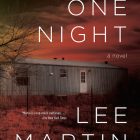The Narrowed Divide: Of Stylists, Shape-Shifters, and Multiple Aesthetics
Our collective understanding of how a story, poem, or essay should operate remains in constant flux; every sentence is a new description of language, every piece of writing, a new commentary on art. In this sense, any shared definition of storytelling is best left unresolved, unless we are to say a story is simply something that will continue to surprise us again and again.
As examples of the boundless possibilities of language, here are five pieces of writing that embrace multiple forms, comfortably residing in the shadow space that exists between genres. In subverting tradition and synthesizing dual modes of expression, these shape-shifters offer the welcome reminder that aesthetic is always open for interpretation from unexpected vantages.
1. The Essay as Poem: “The Glass Essay,” by Anne Carson
Nominally essayistic and in appearance a lined poem, “The Glass Essay” resists easy categorization. Rather than offering a structure of comfortable familiarity, Carson invites readers to inhabit “an ungainly body stumping over the mud flats with a look of transformation.” Yet within this restless composition resides stunning elegance—a weave of confession, poems within poems, and thirteen visions called “Nudes” used to illustrate the end of an affair. While the resulting form is difficult to label, it retains moments of intense recognition: “It was not my body, not a woman’s body, it was the body of us all.” Call it a poem, argue it’s an essay—regardless, this work of art will keep you returning, offering new meaning with every reading. The same can be said for Carson’s other publications, including Nox—by turns poetry collection, elegy, and accordion book-in-a-box.
2. The Poem as Essay: “The Balloonists,” by Eula Biss
Acclaimed essayist Eula Biss cites Anne Carson as an early influence in her own writing. Having begun her career as a poet, Biss wrote her first book, The Balloonists, through the framework of prose poetry, though its incorporated characters, dialogue, and timeline also lend it the sense of an essay. Says Biss: “Even though it doesn’t look like poetry in a number of ways, I was calling it poetry because poetry was the only genre I knew of where I’d seen anything like that happening.” The search for new modes of articulating both self and story extends into the book’s narrative: “Women now face the task not only of finding a form that can express what they have lived, but of finding a way to tell new stories about what they can live.” Referred to by The Believer as “aesthetically risky,” The Balloonists unites autobiographical voice, gathered evidence, and emotional acuity to refract an intimate portrait of family relationships. More than this, its large-minded lyricism confidently traverses an original orbit, working along the peripheries of poetic form while drawing from multiple literary styles as precedent.
3. The Cartoon as Short Story: “Cat N’ Mouse” by Steven Millhauser
Venturing far from storytelling’s oral beginnings, Millhauser’s “Cat N’ Mouse” employs the soundless scripting of Tom and Jerry cartoons to depict a narrative of adversarial tension. The experience of reading this story underscores the way written words generate vivid images in the mind: “The cat looks at the dynamite and turns his head to the audience. He blinks once. The dynamite explodes. When the smoke clears, the cat’s face is black. In each eye a ship cracks in half and slowly sinks in the water.” Are we reading the cartoon, or are we animating the words? Is the narrative drawn or described? We do not know where this work falls between story and script, exactly, only that it is exactly what it needs to be. By stylistically modifying a childhood television show, Millhauser succeeds in creating a work that embodies comedy alongside a profound reflection on the nature of conflict.
4. The Dictionary as Novel: The Lover’s Dictionary, by David Levithan
It seems right that a dictionary might become a writer’s muse, though what is perhaps more surprising is that alphabetical entries could productively underpin an entire novel. Such is the case with Levithan’s The Lover’s Dictionary, which wholly delights in the play and possibility of words. From its outer wrappings the book appears to be a traditional story, though inside it offers the second, fragmented form of a reference manual. Despite their ostensibly separate functions, Levithan deftly combines these two structures in an expressionistic way: “Ineffable, adj. Trying to write about love is ultimately like trying to have a dictionary represent life. No matter how many words there are, there will never be enough.” In the truest sense The Lover’s Dictionary is both a love story and a love for story, a perceptive exploration of the unknown finalities of language. In this it is novel and dictionary both: a new entry under the definition of what a book can be.
5. The Folktale as Essay: “Morphology of the Hit,” by Leslie Jamison
While “Morphology of the Hit” holds more allegiance to essay than fairy tale, Jamison’s account of a violent experience in Nicaragua is arranged, in part, according to a storytelling structure proposed by the Russian scholar Vladimir Propp. A principal source of tension in the essay is Jamison’s sense of inadequacy to the task of description—her sense that what she writes will not convey the bewilderment and pain she experienced, or that it might instead turn the event into something it never was to begin with. There is the awareness that words might not offer all she needs to say on the subject: “I’ve been trying for a while but I still haven’t learned how to tell this story right. I am looking for the proper function. What is morphology anyway? I looked it up and found this: ‘The study of the shape and form of things in general.’ In general. Okay. A place to start.” Without losing her preoccupation with Propp’s foundations for the folktale, Jamison charts a personal narrative that simultaneously descends below the surface into self-scrutiny and transcends the essay’s expected form. Stylistically innovative and intensely honest, Jamison’s work is intricately woven at every turn. It calls to mind the word concinnity. If you look it up you will find this: “The skillful and harmonious arrangement of the different parts of something. The studied elegance of literary style.”
Each of these five authors demonstrates an impressive use of harmony—the ability to hold the conflicting currents and complimentary qualities of several literary traditions at once. They are part of a growing company of writers who continue to challenge artificial genre divisions and modify conventional notions of form. The delight and surprise that results from this range of exploration summons the words of Mary Ruefle, who recalls the time a violin became voice: “In the aria of Bachianus brasileiras no. 5, (Brazilian soprano) Bidu Sayão persuaded (composer) Villa-Lobos to transcribe for her voice what had originally been a violin solo; an impromptu, experimental take was made in New York, in 1945, ‘just to hear how it would sound.’ It was never recut. Everyone in the study knew, immediately, there was no need.”



